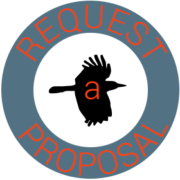Investigation & Humanity At The Core Of Web Design & Development Projects
![]()
Sharpen your focus because the beginning isn’t always what you think it will be.
This article, written by Gina Fiedel, was originally published on November 2, 2018 on Search News Central.
I would never suggest devaluing or sidestepping effective marketing practices. They’re proven. Embracing the importance of sharp website organization and content is compulsory.
Information leads to making solid choices, decisions and we want as much in our toolbox as possible. And yet, it’s still important to continue to give close attention to certain fundamental questions that might be overlooked. Often in our effort to be smart as developers and designers the meaty, beginning steps of the process get passed over. They may feel too slow or tedious.
But a good project, no matter what the entity, has not only numbers and dollars at its core but humanity and heart. Thorough investigation.
If your clients are solopreneurs, micro-businesses, small to medium size companies, corporations or non-profits chances are you’ll be working directly with folks that come to the project with pre-conceived notions that may or may not be accurate or useful.
Chances Are
They may have that famous little bit of dangerous knowledge. Their preparation may be lacking on a variety of levels. Or it could be that they’re inexperienced with the process so expectations are skewed.
Perhaps they’ve had a bad web design experience, are gun shy and possibly even suspicious, distrusting. It’s possible they haven’t yet worked with a seasoned team who knows how to lead them through a project constructively with a good result that matches the value of the monetary cost in a reasonable timeframe. One way or the other you may be faced with clients whose biases are pushing a momentum you’ll need to be aware of and might need to counter.
 Creative Listening
Creative Listening
Regardless, they will be hungry to be listened to and understood even if they think they’re in a hurry.
But not only that, they will need some educating and it’s in our hands to be generous with them. We need to deliver not only a successful end-product that will foster their success but also be willing and able to walk them through the process to get to that successful end-product. We want to guide them in a way that leads to healthy collaboration internally and with us. And eventually to genuine communication about them and then from them to their customers or clients as the project takes shape. And we need to be efficient with everyone’s time.
That’s a lot of requirements. It can be done.
Regardless of who’s pushing for it or not, it’s imperative that we focus on the creative act of listening with an open mind. That transports us to places as a developer/designer that we likely haven’t encountered in other projects because each client is unique. There will almost always be something new.
Being able to listen and actually hear widens our perspective to what the true issues are and how we might arrive at varying solutions. We can use what we hear constructively.
The Value of Entity-Self-Knowledge
Interaction during the process on all sides, at each step of the way adds to the entity’s self-knowledge. Self-knowledge is critical to their success. Introspection is how to get there. The entity’s “why”, its purpose, needs to be uncovered early in order to relate accurately and productively to their customer on the web. The project will fail if it isn’t accomplished.
If you understand that a website is an extension of the entity it belongs to then it’s easy to realize that the entity informs the website and that the website then also informs the entity in return. There’s a pattern, a loop of educational potential that germinates with the start of the project and will continue to blossom more and more over time as the entity lives and works with the site.
Internal value remains and continues to build within the organization long after the site is launched.
The Beginning
Think about meeting your clients for the first time. You don’t know them yet. They’ve come to you for the task of creating what could arguably be their most critical marketing and communication tool; their website. They may have given some thought to wanting more traffic, increased revenue and have come armed with both necessary and wished for functionality.
They still may not have stopped to think in any detail about how they will actually communicate their value without being overly self-referential, and in turn be able to improve their service and relationships with customers or clients.
The content has to be written. It has to be organized. That means that first, it has to be conceived and planned.
Where To Start
It’s good to start in the most obvious place. It seems so simple.
~ Who are they?
~ What do they do?
~ Why do they do it?
~ What are they like to do business with? Tone, style, character.
~ Do they know their customers’ needs and their questions? What are they?
~ Are they aware of how those needs and questions weave into their own identity and help to solidify it?
Necessities
And then, culling out the necessities.
~ What are we actually communicating?
~ How do we say the things that need to be said?
~ Where is that precarious perfect balance between the site’s ability to illuminate the entity’s identity and their customer base needs and question?
~ How are you going to design in the information that will allow the customer to know what it’s like to do business with them?
How will the organization build and maintain the “you” and the “we” instead of the “me” and the “I”?
This can be tricky stuff. Tipping to one side or the other too heavily can make it topple. Addressing these concepts and issues with a strong sense of humanity from the start and weaving them into the discovery of the entity will make for a consistency and clarity that will help guide the project.
Premix Photos:
Photo by rawpixel on Unsplash – black and white
Photo by pine watt on Unsplash – white frame
SUBSCRIBE & RECEIVE BLOG NOTIFICATIONS OF NEW POSTS:
* Don’t miss any of our blog posts! Subscribe below.





